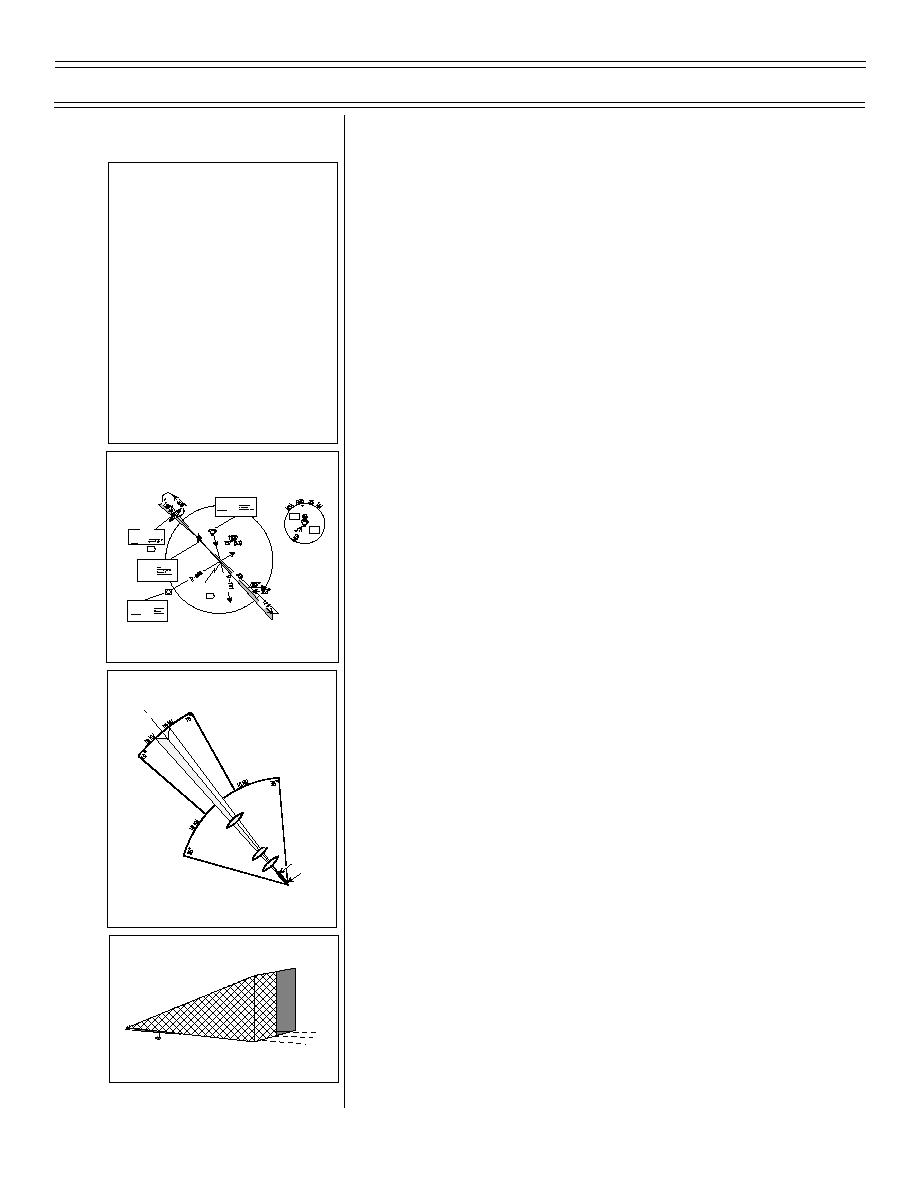
T-45C TS & ADV BIFP-08
GCA/ILS Procedures
V. Elements of an ILS approach 2.9.4.6.5, 2.9.4.6.1.1.1
Sg 6, fr 2
GCA/ILS PROCEDURES
A. Localizer
*
Descent to GCA pattern
1.
Provides azimuth for front and back course
*
Precision radar approaches
approach (unless antenna shielded from
*
Surveillance radar
back course)
approaches
*
Performing missed
2.
Usable range: 35 degrees within 10 nm
approaches
and 10 degrees within 18 nm of course
*
Elements of an ILS
centerline unless published approach
approach
depicts a transition beyond this range
*
ILS approach procedures
3.
Beam width is 5 degrees wide, 2 1/2
Sg 6, fr 3
degrees either side of centerline
BROWNSVILLE
4.
Transmits on odd tenths from 108.1 MHz
116.3 BRO
Chan 110
2600
through 111.9 MHz - Aural Morse code
LOM
1600
DEPOO
393 BR
identifier will include the letter “I“ preceding
I-BRO 7.4
LOCALIZER110.3
the normal 3-letter identifier
I-CRP
Chan 40
(IAF)
CALIA INT
I-BRO 4.9
MATAMOROS
114.3 MAM
NOTE: The localizer sensing equipment
Chan 90
displays aboard the aircraft are four times
BACK COURSE LOC APPROACH
as sensitive as TACAN and VOR displays.
Sg 6, fr 4
B. Glideslope transmitter
1.
Produces a navigational signal which
provides vertical guidance for the pilot
(glidepath) along the localizer approach
course
OM
MM
NOTE: The ILS beam gradient (glideslope)
IM
Runway
Local
is normally set for a 3-degree glidepath.
However, the angle may be set to other
LOCALIZER SIGNAL USABLE RANGE
gradients due to terrain or obstacle
clearance and/or reception requirements.
Sg 6, fr 5, pg 1
2.5
2.5
LOCALIZER BEAM
(4-01) Original
Page 8-28



 Previous Page
Previous Page
